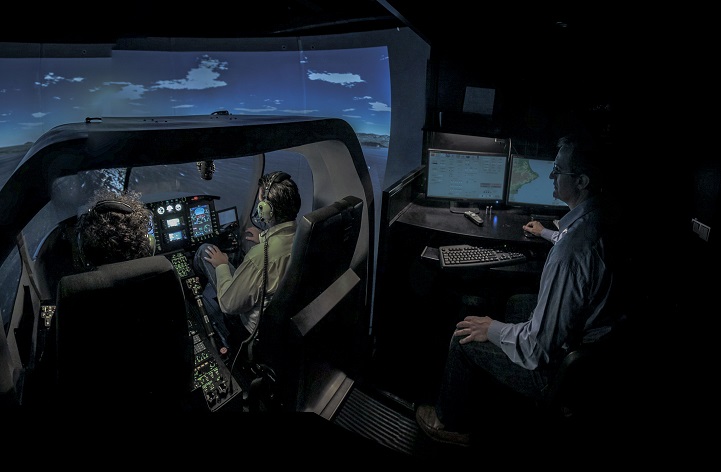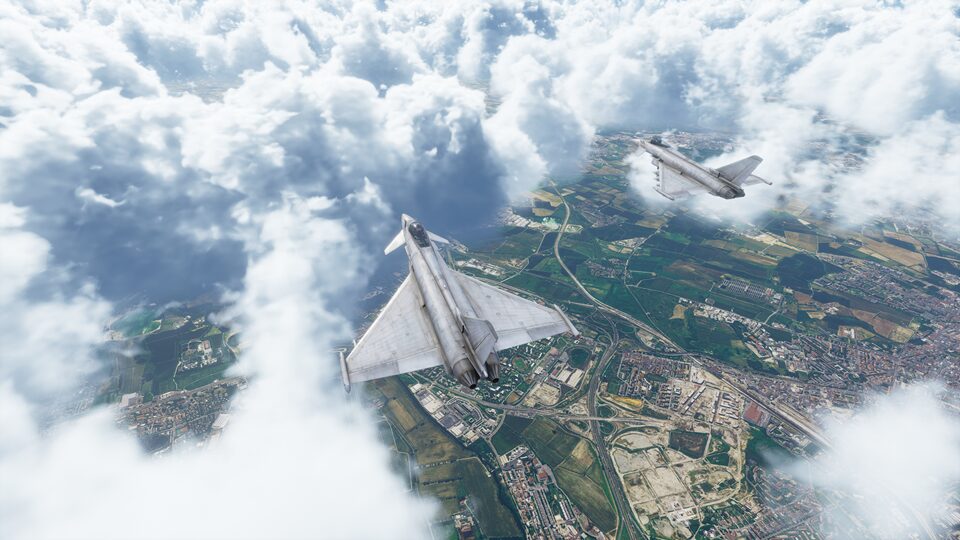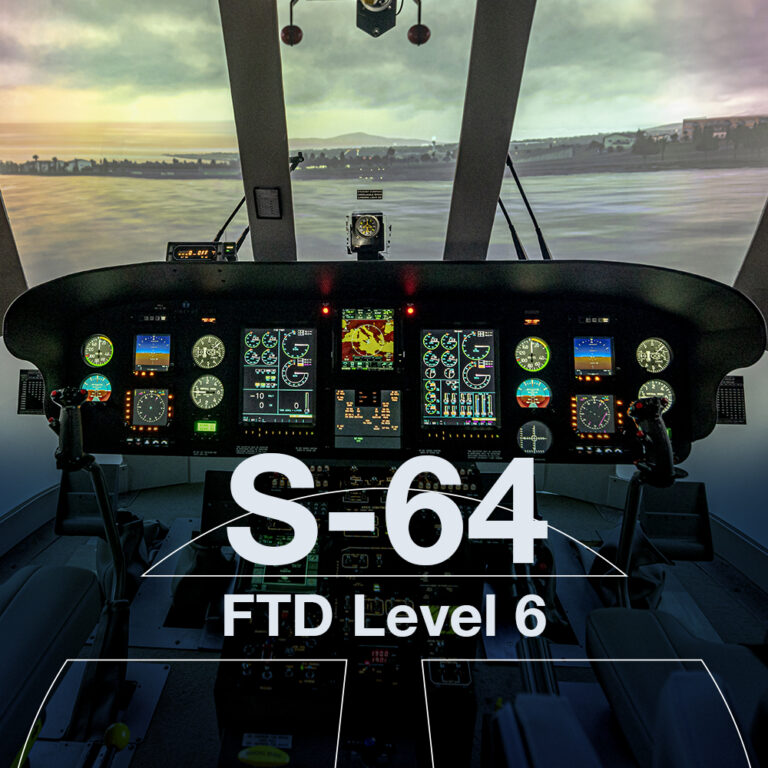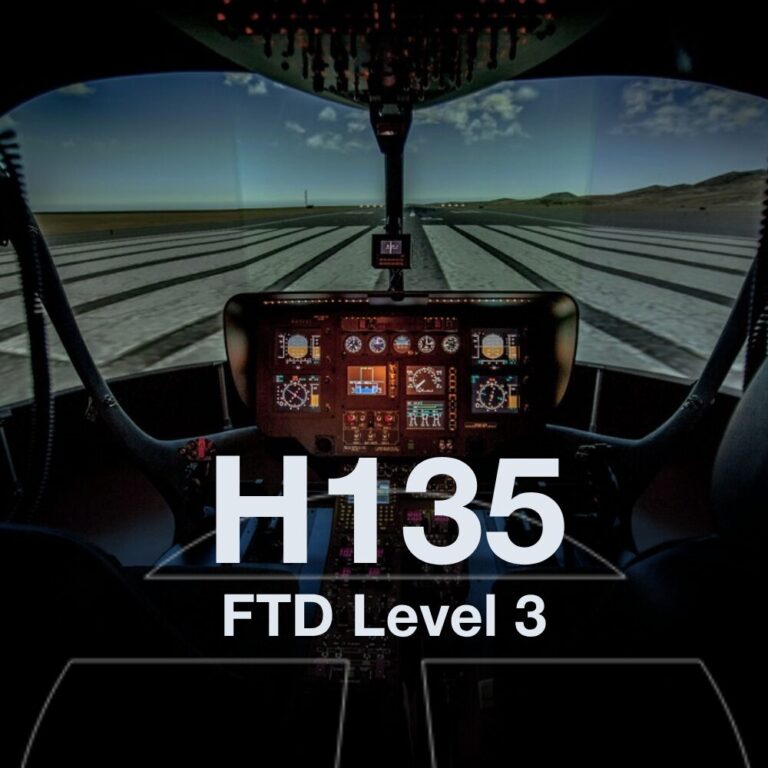Defense missions are, by definition, high-stakes, complex, and demand a level of precision and readiness that is unmatched. Training pilots for these operations in real aircraft is extremely costly and, in many cases, dangerously risky.
This is where the modern flight simulator becomes an indispensable tactical asset.
Beyond standard procedures training, today’s simulators are immersive tactical training environments. They allow defense forces to prepare their fixed and rotary-wing pilots for the complexities of the modern mission. This article explores how a high-fidelity flight simulator serves as a core pillar for military aviation training.

What makes a Flight Simulator optimal for defense missions?
Not all simulators are created equal, especially when the objective is tactical training. For a device to be effective for defense missions, it must deliver a level of realism that goes far beyond basic aircraft operation.
- Accurate flight models: the foundation of all effective training. The simulator must precisely replicate the behavior of the specific aircraft, from engine performance and control response to complex scenarios like stalls or autorotation in helicopters.
- Total environment control: a Flight Instructor or mission commander must have absolute control over the scenario. This includes the ability to modify weather (wind, turbulence, clouds), visibility (fog, time of day/night), terrain, and the introduction of threats.
- Advanced visual systems: for mission training, visual fidelity is key. Recent developments like Entrol’s envision visual system are crucial, providing high-fidelity, specific scenarios for specialized missions.

Key tactical skills honed in the simulator
A flight simulator is a tactical sandbox. It allows crews to practice scenarios that are impossible to coordinate in real life on a repetitive basis, focusing on core military skills:
- Mission planning and execution: pilots can conduct specific planned missions from start to finish. This includes route study (ingress), target acquisition, and exit (egress), all within a simulated environment that mirrors the actual operational terrain and threats.
- Threat response and decision-making: the true value of the simulator lies in its ability to train decision-making. A Flight Instructor can introduce system failures, unexpected enemy contact, or sudden mission changes. The pilot must re-evaluate the situation and make critical decisions under pressure.
- Formation flying and communication: formation flying is a cornerstone of military aviation. Networked simulator environments allow multiple pilots to train together, practicing complex formations, clear communication, and the use of standard phraseology in a controlled setting.
This advanced level of tactical aviation training is conducted across a range of high-fidelity devices. Simulators such as FNPTs, FTDs, and Full Flight Simulators (FFS) are all used to fully replicate the cockpit and systems, providing the total immersion needed for these complex tasks.
Achieving proficiency and enhancing safety
The ultimate goal of training is proficiency and crew safety. The simulator accelerates both dramatically.
First, safety. The most significant advantage of a flight simulator is the ability to train for situations that are simply too dangerous to replicate in a real aircraft. This includes catastrophic system failures, severe spatial disorientation, or evasive maneuvers under direct threat. The crew can experience and manage these events in a 100% safe environment.
Second, proficiency. Repetition is the key to mastery. Pilots can repeat tactics, formations, or mission plans until proficiency is achieved. Tools like the debriefing station are invaluable here. The crew and instructor can review the entire mission, frame-by-frame if needed, analyzing every action and decision to improve future performance.

The future of tactical aviation training
The role of the flight simulator in defense has evolved from a “procedures” tool to a “tactical” one. It allows air forces to prepare their pilots for complex missions, respond to dynamic threats, and achieve mastery in critical operations—all while enhancing safety and optimizing operational costs.
As technology advances, the line between simulation and operational reality blurs. Investing in the right flight simulators is a direct investment in mission readiness and effectiveness.
At Entrol, we have extensive experience developing high-fidelity simulators for defense applications, covering fixed-wing and rotary-wing.
Our customizable solutions are designed to meet your specific tactical training requirements and enhance your pilots’ readiness.
Contact our team of experts to discuss how we can help you achieve your training objectives.



